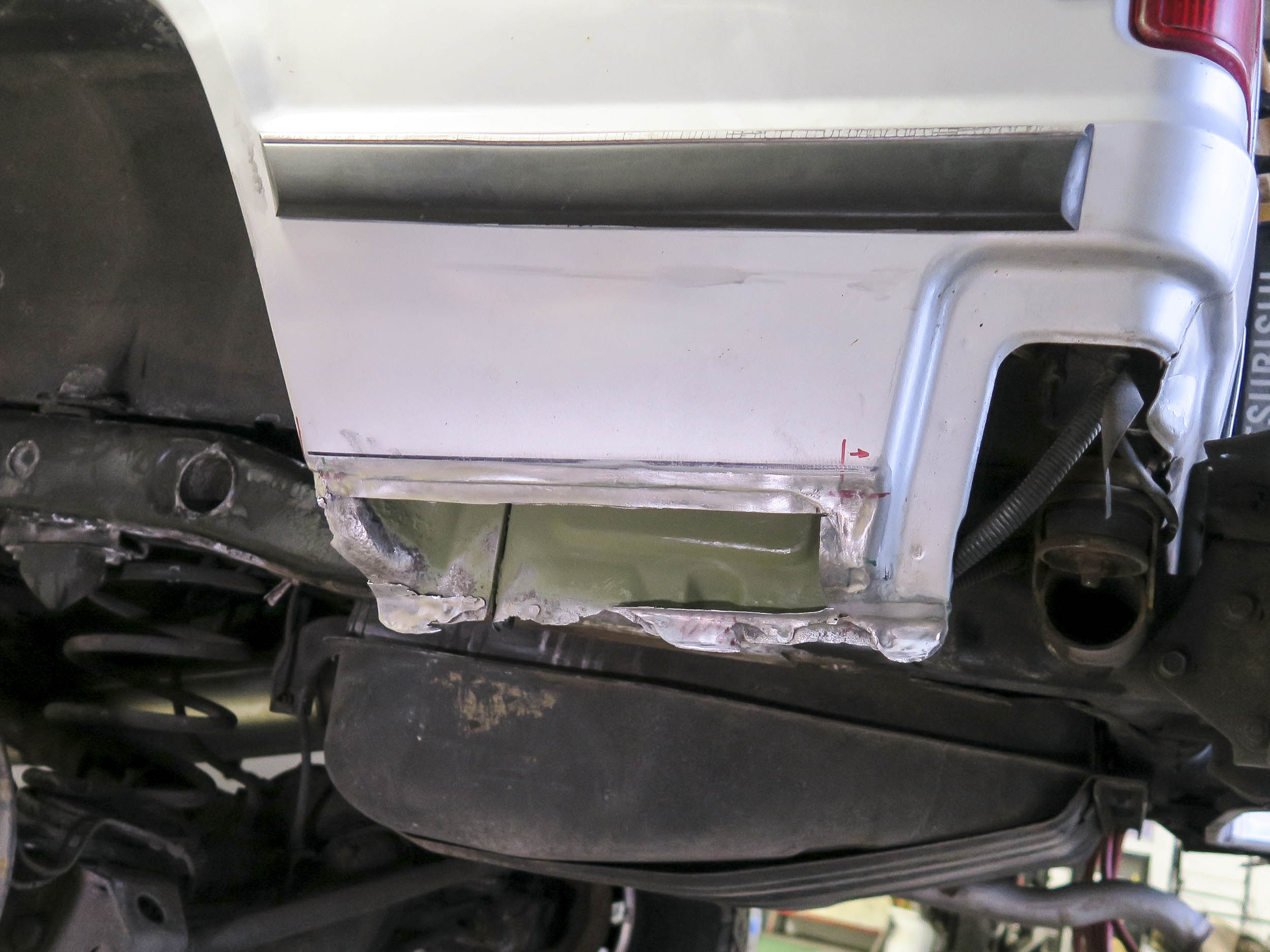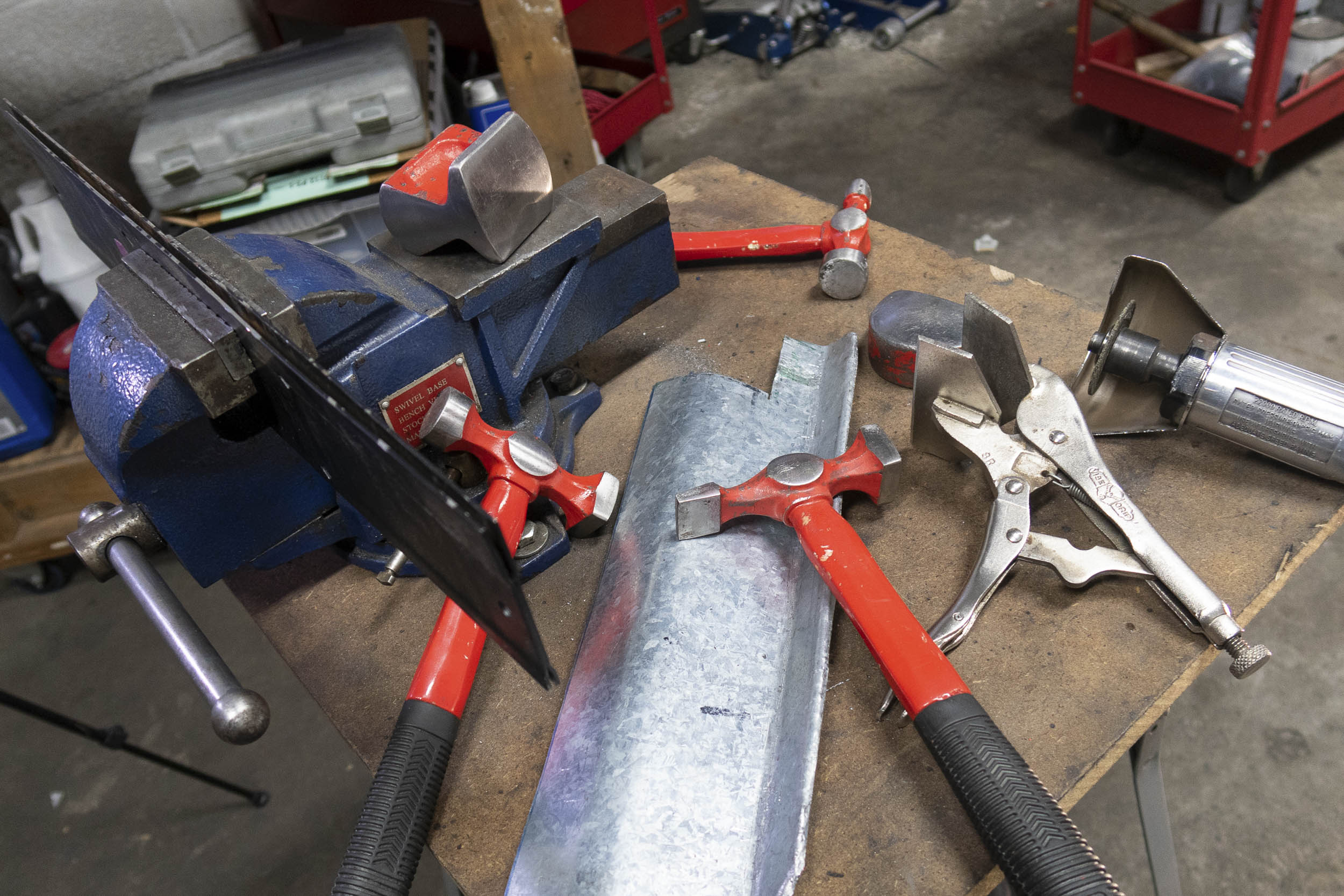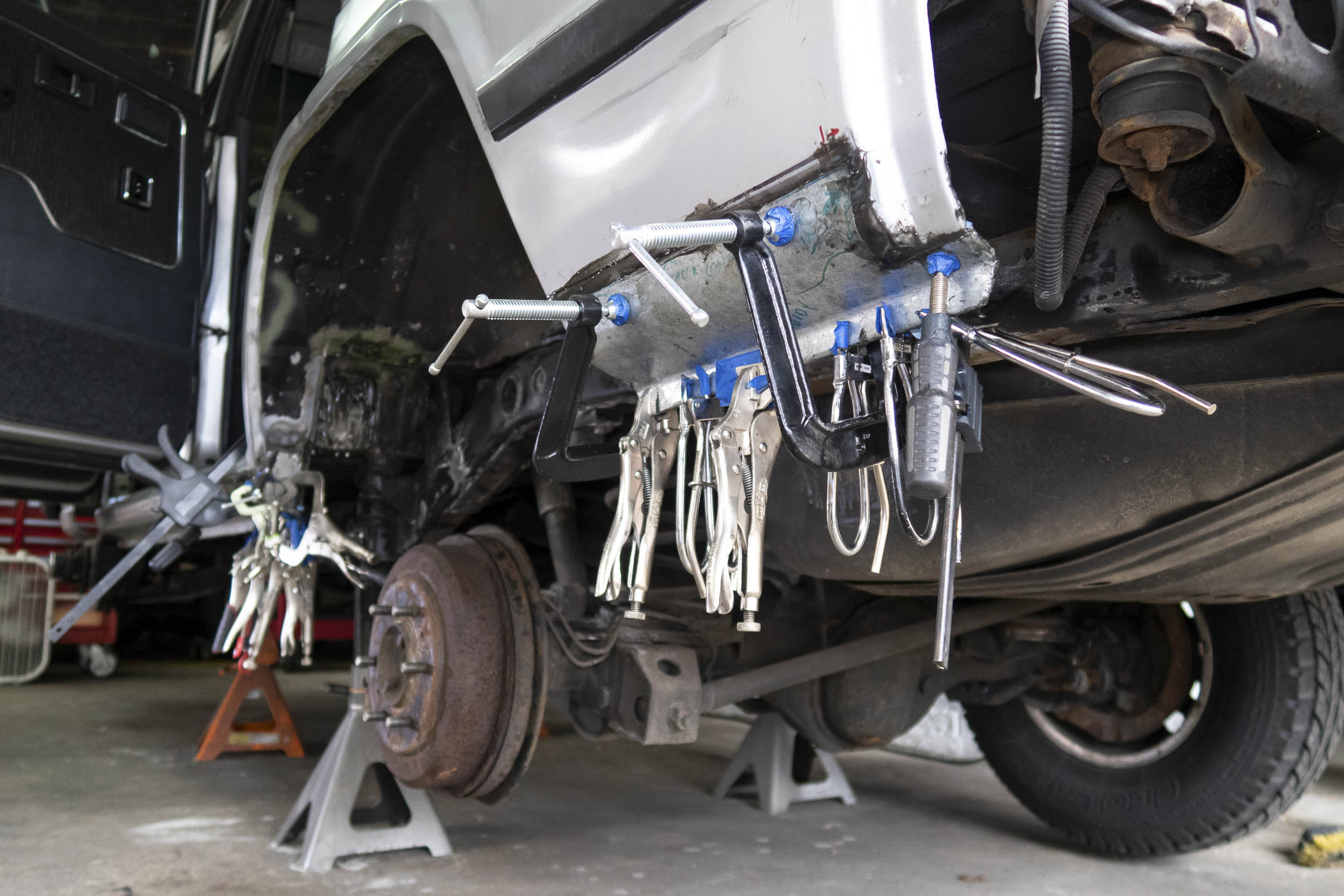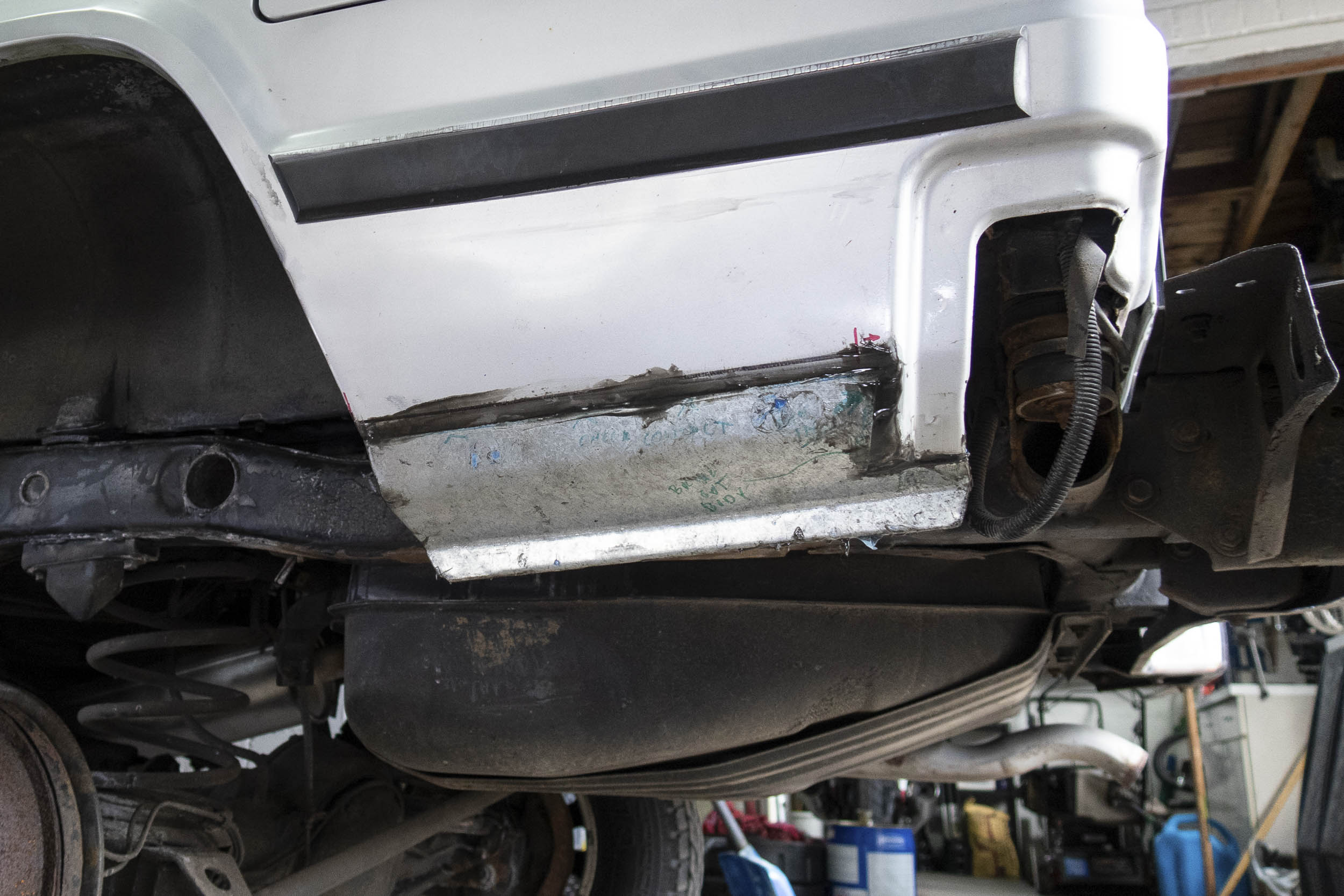Media | Articles
How to repair rusted metal without welding
Thanks to modern chemistry and manufacturing, we now have two-part epoxy panel adhesives that are strong and flexible enough to bond metals together more or less permanently. I had a major rust problem in my 1989 Mitsubishi Montero LS V-6 four-door and thought giving glue a chance would at worst demonstrate what not to do, and at best bond some new steel in place of rust with a minimum of body filler.
Having tried everything from trusty old Bondo to welding in steel, this was my first time using panel adhesives (unless all those tubes of Testors model cement count). And, to quote Airplane, it really was indeed the wrong week to quit sniffing glue.

My target here was non-structural steel-to-steel repair, the expected end result being somewhere in between exquisite hand-hammered Italian coachwork and the standard New England Tiger Hair skimmed over expanding foam hack and pack. Welding in patch panels with a flux-core welder without a gas envelope is an exercise in burn-through and swearing—so glue it was. And maybe the epoxy would result in a more rustproof seam.
The first step was to cut out the rust. Following some quick work with a Sharpie and cutoff wheel, a perforated steel and Bondo sandwichs littered my workspace floor.
Marketplace
Buy and sell classics with confidence

Next up I used a pneumatic flanging tool that clamped its offset jaws onto the steel and gnawed around the hole so the steel patch had a recessed contact patch to sit flush in the adhesive for minimum body filler work. Once the patch area was ready it was time to cut some paper templates to create the steel patches. As there are no ready-made patch panels or skins for the mighty Montero, I fabbed up some one-off templates with a Sharpie, poster board, and protractor for angle measurements. I thanked my lucky stars I was working with boxy, squared-off ‘80s SUV design.

I then used the templates to trace out the patch panels on some sheet metal. After slicing the patches out with a cutoff wheel, next came the bending, hammer, and dolly session until the patches matched the holes and fit snug and flush into the flanged seat. (I used a piece of PVC pipe, a vice-mount miniature metal break, and body hammer kit.) Test-fitting with clamps was up next. Working with two-part epoxy adhesive can range from quick to slow, so my plan was to have all the clamps ready to rock once the two-part adhesive started flowing.


We used every clamp I had access to, from Vise-Grips to hose forceps with some masking tape on the contact points. My prevailing theory was that masking tape would be easier to grind off the metal than a clamp. Probably overkill, but there is a second flat U-shaped steel patch on the backside that made an epoxy and steel sandwich of sorts. Self-tapping screws came in handy for fender well patches. Cure time was 6-8 hours on this stuff, so that was that until the next morning.
Come the next day, I dropped the clamps and the repair was solid. Success! After some grinding with a 24-grit resin sanding wheel on a four-inch grinder, the patch was ready for a skim coat of body filler, primer, and finish paint.


One advantage to panel adhesive over welding is that the lack of heat that can warp steel door or quarter panel skins. Another bonus for adhesive over welding is the potential bonding of dissimilar materials. Fiberglass fender flares or an aluminum NACA duct to a steel body, for instance. The adhesive I used is an Evercoat product that came in a single standard size tube. The caulking gun struggled but the mixed adhesive eventually flowed. Other products use a dual tube setup that requires a matching gun. Choose your weapon and bond away. Was it easier than welding? Yes and no. Certainly different.


I am by no means a fabrication expert—my bodywork skills were developed from time spent in the Set Painters Union sanding Bondo for the International Alliance of Theatrical Stage Employees. The first time no-weld metal repair has held through a few hundred miles of extreme cold and two winter storms so far. Time will tell just how well it holds up. It is not the right repair for every situation, but sometime it is just the repair that is needed. Never bad to have one more way of doing things in your knowledge arsenal.

